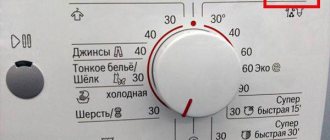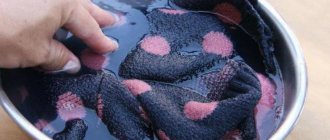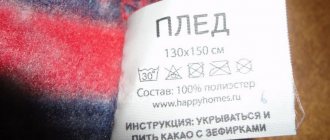The question of how long it takes an automatic machine to wash may seem a little strange. However, we dare to say that there is nothing strange about it. A person may be interested in washing time in at least three cases.
Firstly, when a used washing machine is purchased and there are no instructions supplied, secondly, the washing machine does not have a display that would display the washing duration and, thirdly, a person chooses a new modern washing machine and wants to know its capabilities in terms of washing time in different modes. That’s why we decided to talk in detail about how long or how quickly an automatic machine can wash.
What affects the duration of the cycle?
It is not difficult to notice that the washing duration differs in different modes. What factors influence it:
- Temperature. Time is wasted heating water. Washing in cool water saves 10–15 minutes.
- Pre-wash or extra wash. If you add it to the main process, you need to throw another quarter of an hour on top.
- Soak. You can enable this function, but you will have to sacrifice another third of an hour, no less.
- Additional rinse. It is necessary for thoroughly rinsing things. You have to add another half hour to the main cycle time.
- Intelligent approach. Modern SMAs themselves determine the program of action. At the same time, they are guided by the weight of the loaded laundry and the degree of its contamination. The fuller the drum and the more stains, the longer the treatment will be.
- Individual features of the device. The newer the model, the faster the tasks are solved. In older versions, even the express version took 40 minutes.
How to speed up the process
Although automatic machines do not require supervision or additional actions on the part of the owner, everyone dreams of speeding up the process. Here are some effective ways to speed up washing:
- Use delayed start. You can turn on the machine at any time and leave for business or work. The laundry will be ready when you arrive.
- Don't wash one item at a time - pile up laundry for one load instead of 2-3. This will reduce the time required for servicing several washes, and reduce the cost of electricity and water.
- Do not set the upper spin modes or temperatures. This requires additional heating time and prolonged rotation of the drum during squeezing.
- Most powders wash well even in cold water; boiling the laundry is not required.
- Use liquid laundry detergents - things will be clean without additional rinsing.
If you have to do laundry often, there are children in the family, and the washing machine is a pioneer in household engineering, it’s time to consider buying a more modern model. How this will help:
- All modes of the new slot machines have shorter time ranges. A quick wash will take 15-20 minutes, but in an hour you can do a good wash.
- Machines have several different quick wash modes.
- The drum has been improved, the attitude towards things is more careful.
- In modern models, you can lay different fabrics together.
- There are doors for reloading forgotten laundry.
- The machines are equipped with drying chambers.
- It is possible to process items with steam.
Some models can be controlled from smartphones by installing a special application.
Pre-wash - how long does it take?
This program helps improve the quality of washing. The function is comparable to soaking. A distinctive feature is that the powder is poured into two compartments. One tray will be used for the pre-wash, the second for the main wash. Sequence of the preliminary stage:
- Launch of SMA. The powder is washed out of one container. The maximum amount of water is collected in the tank.
- The water is heated to 30 degrees. This temperature is maintained constantly - these are optimal conditions for removing contaminants from fabric fibers. Hot water, on the contrary, helps to fix stains from juices, fruits, and blood.
- The duration depends on what kind of automatic washing machine is used - brand and model. Maximum time - 2 hours.
- Upon completion of soaking, the water is drained. Clean water is collected into the tank for the main process.
Secondary functions
In addition to the main and additional washing modes, in Ariston washing machines you can only select auxiliary functions, for example, only drain or rinse.
- Additional rinse. When this option is activated, the washing machine will perform one more rinse during operation. This is necessary to completely remove the detergent from the fabrics. This possibility is relevant for small children, people with sensitive skin or allergies, and also simply in cases where the detergent was added in more quantity than necessary.
- Individual mode. Allows you to store your own program in the washing machine’s memory, selecting all the necessary parameters for it.
- Spin only. As a rule, the user can independently select the speed when activating this option. This function may be relevant if, after completing a program, the laundry turns out to be very damp or for hand-washed clothes. This option can also be activated after a night wash has been completed, during which the Ariston machine operates very quietly, excluding all spin stages, both main and intermediate.
- Drain. This function can be used in the event of an emergency need to drain water from the tank, as well as in the event of a breakdown of the Ariston machine, when the equipment refuses to drain the liquid from the tank.
How long does a delicate wash last?
A washing machine, even the most innovative one, can hopelessly ruin things made from thin or capricious fabrics. For products that require particularly careful handling, most SMAs provide a delicate washing process. By choosing it, users extend the life of their favorite things. And there are products for which other modes are simply contraindicated.
When applied to washing, delicacy is understood as follows:
- Large amount of water. The tank is filled to the maximum. The more water, the less mechanical stress the items being washed experience.
- Cool water. Gentle washing does not allow temperatures above 30–40 degrees - the exact maximum depends on the specific model and manufacturer. This approach is indispensable for colored items that are prone to shedding.
- Smooth drum running. Lower than normal rotation speed.
- In some models there is no spin activation at all in the delicate mode, in others the spin speed is reduced to 400–600 rpm.
- If the spin is not activated, lightly squeeze the items with your hands - almost all the water drains out on its own.
The duration of the delicate process depends on the model. On average it takes 1–1.5 hours. Maximum duration - 2.5 hours. The process is comparable to manual processing - it is possible to avoid shrinkage, stretching, and shedding. The structure of the fibers does not suffer at all. This is an ideal way to wash items made of lycra, organza, cashmere, polyester, satin, guipure, wool, silk, elastane.
The icon on the control panel is a bowl of water. At the bottom there are one or two stripes. These are water quantity indicators. There are other options for symbols - butterfly, skein of wool, flower.
How to iron and dry clothes after washing
Wäschetrockner, BaWa 004
It is worth noting that gentle washing alone is not enough to preserve the original appearance of products. It is recommended to dry and iron clothes properly.
Tips for drying delicate materials:
- if you did not use a spinner, hang things on hangers over the bathtub and let the water drain;
- Never dry wet items on a line in a bent state or attach them with clothespins;
- either hang the product on hangers or lay it out on a horizontal, preferably mesh, surface;
- to speed up the process, do not place clothes on a radiator or other sources of artificial heat;
- Do not leave light-colored laundry to dry in the sun; try to hang the items in the shade;
- Place the guipure and lace on a flat horizontal surface and cover with absorbent material.
Tips for ironing delicate fabrics:
- for processing, use a high-quality iron with a clean and smooth sole;
- first, try ironing an inconspicuous area of the material with a slightly warm iron, see if the treated area is deformed;
- iron wool at a maximum of 180 degrees only through slightly damp cotton fabric;
- Either do not iron synthetics at all, or set the iron temperature to 110 to 130 degrees, and process only through cotton fabric;
- Iron the organza through a thick sheet of paper at a temperature of 100 to 110 degrees;
- iron silk clothes from the inside out slightly damp, setting the iron temperature to a maximum of 160 degrees; if the material is dry, to prevent streaks from appearing, do not spray the fabric, but moisten it by wrapping it in a damp towel;
- It is better not to iron velvet items, but to treat them with steam from a steam generator or by hanging the item over a bathtub with hot water;
- products made of nylon and elastane cannot be ironed;
If you are unsure of the type and origin of the material, look at the label on the product. The crossed out iron icon means that ironing clothes is prohibited, and the number of dots in the center indicates the degree of heating of the device.
Hand washing in a washing machine - how long does it take?
This is just a type of delicate washing. If the product label shows a hand immersed in water, it can only be washed in this mode at SMA. Or with your hands. The program assumes extremely careful handling with the most gentle mechanical impact. Temperature - 30 degrees. Minimum speed - 400 rpm. Duration - about an hour.
The drum is loaded at 50% - so that things do not wrinkle and are washed thoroughly. The tank is filled as much as possible - there should be a lot of water and space in it. If spinning is provided, then it is set to the very minimum - 350–500 rpm. You can turn it off if you wish. Delicate and manual modes are used not only for capricious fabrics - we listed them in the previous section, but also for products with appliqués, embroideries and other decor. This program is also useful for shoes and outerwear - you can wash jackets, jackets, and down jackets.
How to reduce washing time?
Let's look at this issue using a practical example (if your washing machine has a digital time display, then you can easily experiment without turning on the machine).
What do we see?
- total time: 1h.57m;
- temperature: 60°C;
- spin: 1000 rpm.
Let's set the temperature to 90 oC. We see that the process time has increased to 2h.26m. At t=40 oC the time will decrease to 1h.37m, at t=30oC – to 1h.32m.
Let's turn on the additional "Soak" function. The total time increased from 1.57 to 2.14.
Thus, using the example of one mode, we saw that its duration strongly depends on the heating temperature of the water, increases with the inclusion of the additional “Soaking” function and is absolutely independent of the number of revolutions during the spin cycle.
Of course, in machines from other manufacturers, the spin time may increase with increasing speed, but 2-5 minutes will not save anyone. In addition, it should be mentioned that the duration of the wash does not depend on the load on the drum; in some new models, the weight of the loaded laundry affects the consumption of water and detergent.
In the “Cotton” mode, it is recommended to wash cotton, linen and similar fabrics, or, more simply, fabrics that can be washed in very hot water and wring out well. When turning on the “Soak” function, do not forget to pour the powder into the appropriate powder section (read the instructions for your washing machine).
The “children’s underwear” mode has approximately the same characteristics - after all, children’s clothes should be washed carefully and carefully, every mother knows this.
By the way, these modes include a pre-washing or soaking function, and for this you need to specifically pour the powder into the appropriate section of the powder tray, as mentioned above. If you don’t do this, then for the first half hour your things will simply be rinsed in warm water.
Let's look at other most common operating modes of modern widespread washing machines:
- Synthetic fabrics – lasts 1.5-2 hours, temperature limit is 40°C, and you cannot add the temperature manually, as in the “Cotton” mode;
- Wool or silk – duration about 50 minutes, spin limit – 600 rpm;
- Hand wash – lasts about an hour, heating limit – up to 30°C, spin – 600 rpm.
- As mentioned above, washing time significantly depends on the heating temperature of the water, so set the maximum temperature only in exceptional cases. For cotton, linen and similar fabrics, 60°C is quite enough.
- For the “quick” washing mode, do not set the temperature above 40°C, since heating the water is absolutely pointless - the program is too short, and you will spend extra time and money on electricity.
- If you know at what temperature a particular item should be washed, at what speed it should be wrung out, and whether pre-soaking is necessary, then you can easily adjust the necessary washing parameters on the same “Cotton” mode, and the time will be optimal. After all, most modes are just variations to lure the buyer.
- Try using a delayed start - it is not necessary to let the machine wash when you are at home. The main thing is to be there when the laundry is washed so that it can be hung to dry. For example, you can set a timer in the evening so that you can take out the laundry when you wake up. Or vice versa, set the timer in the morning so that the machine finishes washing when you come home from work.
- One of the cases of increasing washing time can be called “overwashing”. In order not to waste time on re-washing, you need to choose the right operating mode - it’s better to wait an extra 20 minutes than to then re-wash for an hour and a half with the appropriate state of mind. As already mentioned, very often after the express mode, powder stains remain on things, so it’s better to immediately rinse again - you’ll save time and your nerves.
And a couple more tips. Before putting bulky and poorly wetted items into the drum of the washing machine, for example, a bologna jacket, down jacket, pillow, I would advise you to pre-wet them, especially if the washing machine is small. The fact is that such things, when dry, occupy the entire cavity of the drum, do not get wet, and the ribs of the drum do not mix them.
To ensure that your laundry is always perfectly clean, use high-quality detergents - powders, gels, conditioners. Bad powder means not only unwashed items, but also the appearance of new stains that are removed by repeated rinsing. It is better to use liquid gel - pour it directly into the drum along with the laundry you are loading.
Intensive wash - how long does it take?
This is the most serious and lengthy treatment. It is used in extreme cases - if things are heavily soiled and if their fabric allows the conditions offered by intensive washing:
- High water temperature. Maximum - 90–95 °C.
- Long rinse.
- The entire cycle may take 2.5–4 hours. The exact time depends on the specific model.
The disadvantage is the high consumption of water, electricity and time, as well as increased wear and tear on things. This is a test for both the machine and the laundry. Products made from cotton, linen, and synthetics can be subjected to intensive washing.
The drum should not be fully loaded. However, it should not be almost empty. 30–70% of the maximum load is the best option. The sequence of steps is followed:
- Soaking - 15–25 minutes.
- Slow rotation of the drum, then intense and slow again - each version lasts half an hour. Total 1.5 hours.
- Super rinse.
- Spin.
Attention! Each model has its own settings. The duration of processes is not regulated by any framework or standards other than expediency. Therefore, each SMA manufacturer is looking for its own optimal option.
You should resort to an intensive cycle less often - abuse of such a program of action exposes the device to increased wear. Equipment working at the limit will fail faster. The maximum frequency of use is once a month.
detailed instructions
The instructions for activating the “Synthetic” mode are the same for most SMA models. It involves performing the following actions:
- Sort items by color and degree of soiling, remove all small items from pockets, turn items inside out and load them into the drum.
- Add powder or gel to the tray.
- Select the “Synthetic” washing program.
- Adjust the water temperature if necessary. It should not exceed 60 degrees.
- Set the spin speed (maximum 800 rpm).
- Enable the Start button.
- Wait until the washing is completed, take out the items and send them to dry.
If the laundry is heavily soiled, select the additional option “Pre-wash”.
How long does it take to rinse in a washing machine?
The time it takes to rinse depends on the options selected. How many rinses are needed is decided either by the machine itself (the manufacturer) or by the user. The laundry needs to be rinsed thoroughly, and you cannot skimp on this. If the user considers it necessary, he sets an additional rinse, which will increase the cycle by 20–30 minutes.
On almost all brands of SMA, rinsing is indicated by the same icon - a basin with a wavy line or straight lines. Rinsing is one of the main steps. On many machines, the “rinse” button is even located separately. When rinsing, the water is automatically drained. The duration depends on the brand and model of SMA. One rinse may take 10–30 minutes.
Features of use
When processing things in the “Synthetic” mode, the following features must be taken into account:
It is better to wash products with a predominance of artificial fibers not with powder, but with gel.
It is easily washed out of the fabric and dissolves faster, which eliminates the need for pre-soaking and additional rinsing.- The detergent is added to the section of the tray indicated by number II. Water enters it during the main wash stage.
- If the “Pre-wash” function has been activated, then the powder is also poured into section I. Gels cannot be poured there, as they will flow out of the tray ahead of time.
- If you use loose washing powder for washing, it is recommended to use the “Extra rinse” function.
Cotton
This option is chosen for cotton products. Cotton can withstand high temperatures without compromising its shape or properties. The maximum in the SMA is 95 degrees. Push-ups - from 1200 rpm. The duration of the cycle is 2 hours. There are also programs:
- Cotton 40 degrees - washing time 1.5 hours (90 minutes).
- Cotton 60 degrees - 1 hour 50 minutes. (110 min).
At 95°C you should not wash colored cotton fabrics, only white ones. In such hot water, dyed cotton will fade.
Tips for choosing temperature and mode
Before washing, you need to study the labels on the products, sort the laundry by type of fabric and degree of soiling. This will help set the correct modes, not overload the machine with unnecessary functions, and save things from unnecessary friction.
The upper limits of the recommended modes should not be exceeded. Basic rules when choosing washing modes:
- white cotton items can be washed at the highest temperature (60-95 °), spin at maximum speed (up to 1400);
- colored items made from natural fabrics – 40 °, spin – up to 1400 rpm;
- linen - 40-60 °, spin - up to 600 rpm, for clothes turn off spin;
- synthetics and fabrics containing synthetic threads – 40 °, spin – 600 rpm;
- silk, wool, other delicate fabrics - 40°, 400-600 revolutions.
Manufacturers have thought through the operation of their products - when choosing the type of fabric, it is impossible to exceed the permissible temperature and speed.
Express mode
The duration of the fast method may vary among different brands/models of SMA. This is the fastest option - even in old machines it takes 30-40 minutes. And in more modern modifications it’s even less - 15–20 minutes. Why this option? It is ideal for those who wash something every day, for example:
- diapers, rompers, other baby items;
- socks, napkins, handkerchiefs;
- You can freshen T-shirts and other lightly soiled clothing.
Recommended temperature is 30–40 °C. The spin speed is 800–1200 per minute. The express version is very economical - a minimum of electricity is consumed. The entire cycle from the moment the device starts to the finish takes a maximum of 45 minutes. After light washing, rinse once. If you prefer to change your clothes daily, this option is for you. Items worn more than twice should not be washed in this manner: the machine will not be able to efficiently remove dirt under such delicate conditions.
This version is called differently in different machines - accelerated, super-fast, daily, express. The advantage of the method is the 50% use of powder. But the drum is also loaded at 50%. Otherwise, the detergent will not rinse well out of the fabric fibers.
What problems does it solve?
In the “Synthetic” mode, you can wash items of different colors at the same time. The main thing is that they are durable.
Problems that can be solved using this program:
- Refresh the products (recommended washing temperature is 30 degrees).
- Get rid of minor dirt and foreign odors (recommended washing temperature is 40 degrees).
- Cope with difficult stains and persistent odors (recommended washing temperature is 60 degrees).
If the stains are old or highly pigmented, you must additionally use the “Pre-wash” function.
This mode is used to wash items made from fabrics such as:
- Lurex;
- microfiber;
- velsoft;
- nylon;
- elastane;
- lycra;
- polyester and others.
These fabrics are used to sew:
- jackets,
- t-shirts,
- underwear,
- bed sheets,
- dresses,
- sweaters and more.
Pure synthetic items are rare. In most cases, the composition contains several tissues at once. If synthetic fiber predominates, then the choice when washing should be given to this particular mode.
Information about which program to wash a particular product should be found on the label, which is sewn into one of the internal seams.
Eco
This program is often called "bio-care". Suitable for any fabric with different levels of soiling. There are two stages:
- At first the water is warm - 30–40 degrees. Enzymes are activated.
- Then the temperature rises. The normal process begins.
Its special feature is gentle but thorough removal of old dirt. There are modifications of SMA in which it is necessary to use only powders with enzymes in this mode. Eco is an option that combines softness and intensity. Cycle duration is 120 minutes. There are no contraindications: you can wash synthetics, delicate linen, and children's clothes. This option is especially relevant if the machine does not have separate programs for the above-mentioned products.
Is it possible to change the mode during washing?
if at some point during the execution of the washing mode you want to change the conditions, then you need to completely reset the program of one mode and start another. After all, you can’t immediately switch from 95 degrees cotton to a delicate 30 degrees. ... Select a new mode and activate the wash with the “Start” button
Interesting materials:
How to remove old grout between tiles? How to remove old nvidia drivers? How to remove old printer drivers? How to remove old video card drivers and install new ones? How to remove old video card drivers? How to remove old drivers? How to delete old digital signature keys? How to remove old oil stains from clothes? How to remove old oil stains from a down jacket? How to remove old grass stains?
How long does the spin last?
If you take an interest in the characteristics of SMAs offered today on the domestic market, you will see that most devices have a function for adjusting the speed during push-ups. At high speeds, the laundry is wrung out more intensely, which means it contains less moisture and dries faster. The downside of high speeds is increased mechanical impact, which is not suitable for delicate items and fabrics. At low speeds, the laundry is wrung out gently, but also takes longer to dry. Its duration depends on the spin speed. Average duration is 10–15 minutes.
What is this program?
“Synthetic” is a program that is designed for washing items made from mixed fabrics and artificial fibers. Manufacturers of modern washing machines always include it in the list of main modes.
It involves gentle processing of items at low temperatures and medium spin speeds.
The program corresponds to an icon of an empty flask or hanger . Most manufacturers prescribe it verbally, so there will be no difficulties in finding the program, and all symbols are deciphered in the User's Manual.
What other options are there?
A modern washing machine has 10–15 or more program offers. Moreover, there are options for certain things. It is useful to know how long it takes SMA to erase certain things or tissues:
- Shoes - 30–50 minutes.
- Synthetics - 1 hour 50 minutes.
- Silk - 50–60 minutes.
- “Down blanket” - there is also such a mode, the blanket is washed in 90 minutes.
- Children's things - 140 minutes.
What can be washed in the cotton cycle?
First on the list is the “Cotton” mode - this is a basic program for soiled cotton and linen clothes. This washing mode with temperatures up to 60 °C is suitable for dyed fabrics, but if the temperature is higher, then you can only wash white items or dyed fabrics, but with very resistant paint.
Interesting materials:
How much alcohol is needed to keep water from freezing? How much water does it take to run a bath? How much water do you need for 450 g of pasta? How much water do you need for pea puree? How much water is needed to irrigate 1 hectare of alfalfa? How much water do you need per 1 kg of weight? How much water do you need for 1 tablespoon of gelatin? How much water do you need for 400 grams of sushi rice? How much water is needed for 800 grams of rice for pilaf? How much water do you need for half a kilo of buckwheat?
Advantages and disadvantages
Advantages:
Careful treatment of fabrics.- Possibility of quick start, without adjusting the temperature and spin speed.
- Possibility of washing items made from mixed fabrics.
- The mode is combined with the options “Extra rinse”, “Soak”, “Pre-wash”.
- It is possible to use powder, gel and capsules.
- Optimization of resource consumption.
Flaws:
- The water temperature cannot be higher than 60 degrees. Therefore, to remove difficult stains, pre-soaking or using stain removers may be necessary.
- The spin speed should not exceed 800 rpm, so it will not be possible to get completely dry items out of the drum.











